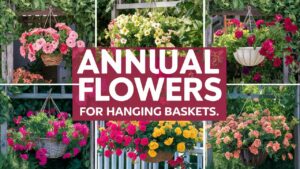Alyssum (Lobularia maritima) is an annual that has captivated gardeners with its delicate white blooms and sweet fragrance. When grown in containers, alyssum can add a touch of elegance and serenity to any outdoor space. In this comprehensive guide, we’ll explore the best practices for growing alyssum in containers, from sowing seeds to troubleshooting common issues.
Choosing the Right Container
When selecting a container for your alyssum plants, consider one that is at least 6-8 inches deep and has drainage holes to prevent waterlogged soil. A potting mix specifically designed for containers will also help to ensure healthy root growth. Alyssum prefers well-draining soil and full sun to partial shade, so choose a container that can provide these conditions.
If you’re new to growing plants in containers, consider starting with a smaller container (around 4-6 inches deep) to prevent the soil from becoming too wet or dry. As your plant grows, you can transplant it into a larger container if needed.
Sowing Seeds
Alyssum seeds are small and can be sown directly into the container or started indoors 4-6 weeks before the last frost date in your area. Sow seeds about 1/8 inch deep and 1-2 inches apart. Keep the soil consistently moist during the germination period, which typically takes 7-10 days.
When sowing seeds indoors, use a seed starting mix specifically designed for indoor seeding. This type of mix is usually lighter and more porous than regular potting soil, making it easier for small seeds to germinate. Water the seeds gently but thoroughly after sowing, and then provide indirect light until they emerge.
Caring for Your Alyssum Plants
Once seedlings have emerged, you can reduce watering to once a week, or when the top inch of soil feels dry to the touch. Fertilize your plants regularly with a balanced fertilizer (10-10-10 NPK) to promote healthy growth and blooming.
Alyssum is a relatively low-maintenance plant, but it does require some care to thrive. Here are a few tips to keep in mind:
Make sure your container has good drainage holes to prevent waterlogged soil.
Avoid overwatering, as this can lead to root rot and other problems.
Provide full sun to partial shade, depending on the location of your container.
Fertilize regularly with a balanced fertilizer.
Pruning and Training
Alyssum has a tendency to become leggy if not pruned regularly. Pinch off the tips of the stems to encourage branching and promote bushy growth. You can also prune back the plant by about one-third after it has finished blooming to encourage new blooms.
When pruning, use clean scissors or pruning shears to prevent spreading diseases from one plant to another. Make sure to disinfect your tools between uses to prevent the spread of disease.
Common Issues and Troubleshooting
As with any plant, alyssum is susceptible to pests and diseases that can affect its growth and appearance. Here are a few common issues you may encounter:
Pests: Check your plants regularly for signs of pests such as aphids, whiteflies, or spider mites. Treat infestations with insecticidal soap or neem oil according to the product’s instructions.
Diseases: Fungal diseases can cause yellowing leaves and black spots on the stems. Treat fungal infections with a fungicide specifically designed for containers.
Lack of Blooms: Alyssum may not bloom if it is not receiving enough sunlight or if the soil is too cool. Move your container to a sunnier location and consider using a heating mat or warm location to encourage blooming.
Tips for Success
Here are a few additional tips to help you achieve success with growing alyssum in containers:
Use a well-draining potting mix: Avoid using regular garden soil in containers, as it can retain too much water and cause root rot.
Don’t overwater: Alyssum prefers dry soil between waterings. Overwatering can lead to root rot and other problems.
Deadhead regularly: Remove spent blooms to encourage your alyssum plants to produce more flowers.
Provide support: If you’re growing tall varieties of alyssum, provide support using stakes or trellises to keep the stems upright.
Varieties of Alyssum
There are several varieties of alyssum that you can grow in containers, each with its own unique characteristics and growth habits. Here are a few popular varieties:
Lobularia maritima: This is the most common variety of alyssum, known for its delicate white blooms and sweet fragrance.
Alyssum saxatile: This variety has smaller blooms than Lobularia maritima but is more compact and produces fewer seeds.
Alyssum montanum: This variety has larger blooms than Lobularia maritima and a more sprawling growth habit.
Conclusion
Growing alyssum in containers can be a rewarding experience, especially if you’re new to gardening. With the right care and attention, these plants can thrive in even the smallest of spaces. By following the tips outlined in this guide, you’ll be well on your way to growing beautiful, fragrant alyssum in your own container garden.
Additional Resources
If you’re looking for more information on growing alyssum or other herbs in containers, there are several resources available:
Online Gardening Forums: Websites such as GardenWeb and Houzz have active gardening communities where you can ask questions and share advice with other gardeners.
Gardening Books: There are many excellent books available on the topic of container gardening, including “Container Gardening for Dummies” by Katie Elzer-Peters and “The Container Gardener’s Handbook” by Barbara Damrosch.
Local Nurseries: Visit local nurseries or gardening stores to ask questions and get advice from experienced gardeners.
By following these tips and resources, you’ll be well on your way to growing beautiful, fragrant alyssum in your own container garden. Happy gardening!





